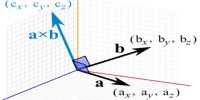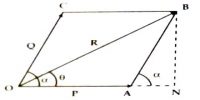Calculus in Physics
Calculus is the mathematical study of change. It has two important branches—differential calculus and integral calculus. Scientist Newton was the first to apply differential calculus in physics.
Importance: Calculus has great importance in physics. Many real processes are explained by equation containing derivatives. Those equations are called differential equation. Physics is associated with change of quantities and development with time. For practical knowledge of some important events ideal of tune derivative is essential. Particularly in physics time derivative of position of a body is important.
Velocity is the time derivative of displacement; acceleration is the time derivative of velocity.
Uses: For determining velocity, acceleration, slope of a curved line etc differential calculus is applied. For calculating area, volume, centre of mass, work, pressure etc integral calculus is applied. Also acquiring knowledge about space, time and type of motion calculus is used
Example: Given, position of an object on a straight line,
x (t) = – 16 t2 + 16t + 32
Then, velocity of the object; v = dx(t)/dt = x (t) = – 32t + 16
and acceleration, a = dv/dt = x (t) = – 32
Newton’s Second law of motion can be expressed by differential equation in a following way;
F (t) = m [d2x/dt2]















